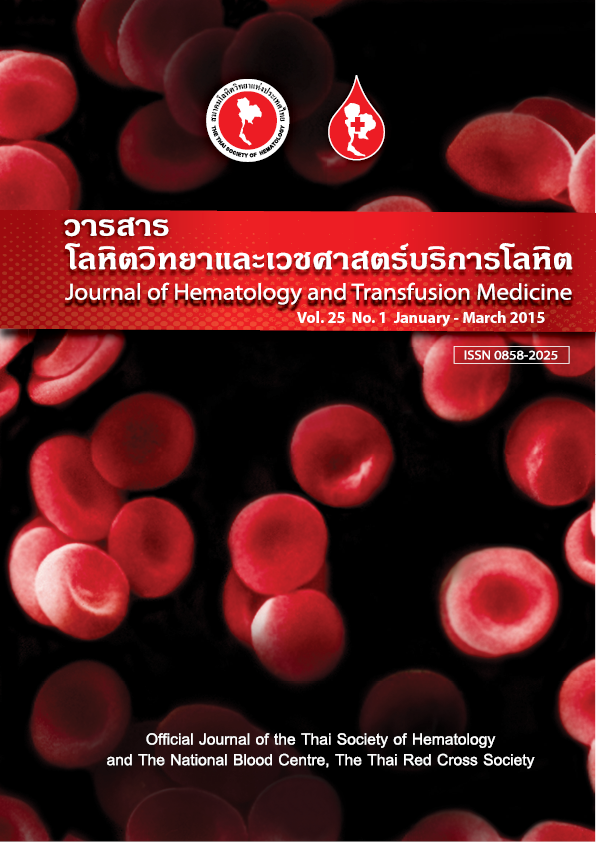Clinical Characteristics and Outcomes of Thrombotic Thrombocytopenic Purpura with Severe ADAMTS13 Deficiency at the King Chulalongkorn Memorial Hospital
คำสำคัญ:
Thrombotic thrombocytopenic purpura, Severe ADAMTS 13 deficiency, Treatment outcomesบทคัดย่อ
Abstract
Introduction: Thrombotic thrombocytopenic purpura (TTP) is a rare but potentially fatal hematologic disorder. Published studies and clinical data of TTP patients in Thailand are still lacking. Objective: The purpose of this study is to review the clinical characteristics, laboratory data, therapeutic interventions and treatment outcomes of patients diagnosed TTP at the King Chulalongkorn Memorial Hospital (KCMH). Patients and Methods: Patients who were diagnosed with TTP and had severe (< 10%) deficiency of ADAMTS13 levels at the KCMH between July 2004 and November 2013 were retrospectively reviewed. Results: Of 16 documented TTP (14 adults and
2 children) with severe ADAMTS13 deficiency, the mean age of patients was 46.1 years. Fourteen were classified as idiopathic (87.5%), while two were HIV-associated TTP (12.5%). Neurologic abnormalities were the most common clinical symptoms, presented in 14 patients (87.5%). Their laboratory results such as hemoglobin levels and platelet counts were comparable with those of patients with severe ADAMTS13 deficiency from other studies. At the time of first diagnosis, all 14 adult patients received plasma exchange therapy but varied in the doses and types of immunosuppressive drugs. The median interval of symptom-to-plasma exchange was 9.5 days. The complete remission (CR) rate and the overall survival of TTP patients were similar at 68.8%, whereas the survival rate in the idiopathic subgroup was 78.6%. The recurrence rate was 45.5% in the first year. Of 5 first relapsed patients, 4 achieved CR with immunosuppressive therapy without plasma exchange. Conclusion: Our study demonstrated comparable clinical and laboratory characteristics of TTP patients to other studies. However, the CR rate and the survival rate were lower. Immunosuppressive drugs play an important role in treating idiopathic TTP in our cohort.



